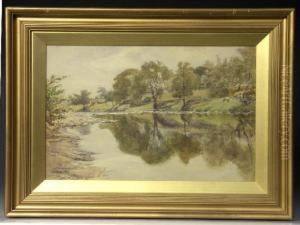William Weston Young Paintings
William Weston Young, born on April 20, 1776, in Bristol, England, was a multi-talented individual known for his work as an artist, an entrepreneur, and an inventor. He was a prominent figure during the late 18th and early 19th centuries, particularly in the region of South Wales.
Young began his career as an artist, focusing on landscape painting. His works often featured the natural beauty of the Welsh countryside, and he became quite skilled at capturing the rugged charm of the area. His artistic journey led him to become acquainted with several influential figures of his time, which eventually shifted his career path towards more industrial pursuits.
In the early 19th century, Young became involved in the development of the Welsh pottery industry. He worked on the improvement of pottery designs and was instrumental in the establishment of the Ewenny Pottery in South Wales, which is still in operation today and is one of the oldest working potteries in Wales. Young's contributions to this industry were not limited to design; he also worked on the technical aspects of pottery production.
Aside from his artistic and industrial endeavors, Young was also a passionate inventor. He is best known for his role in the development of the Dinas firebrick. In the 1820s, Young, along with his business partner Samuel Walker, discovered a method to produce high-quality firebricks, which were essential for the construction of furnaces and other high-temperature industrial applications. The Dinas brick was named after the Dinas silica mine in South Wales where the raw material was sourced.
Throughout his life, Young remained an active member of his community, engaging in various projects and showing a keen interest in local affairs. He passed away on February 7, 1847, leaving behind a legacy of artistic and industrial achievements that had a lasting impact on the region. Young was a man of vision and versatility, and his contributions to both the arts and industry during a time of great change and innovation are still recognized today.
